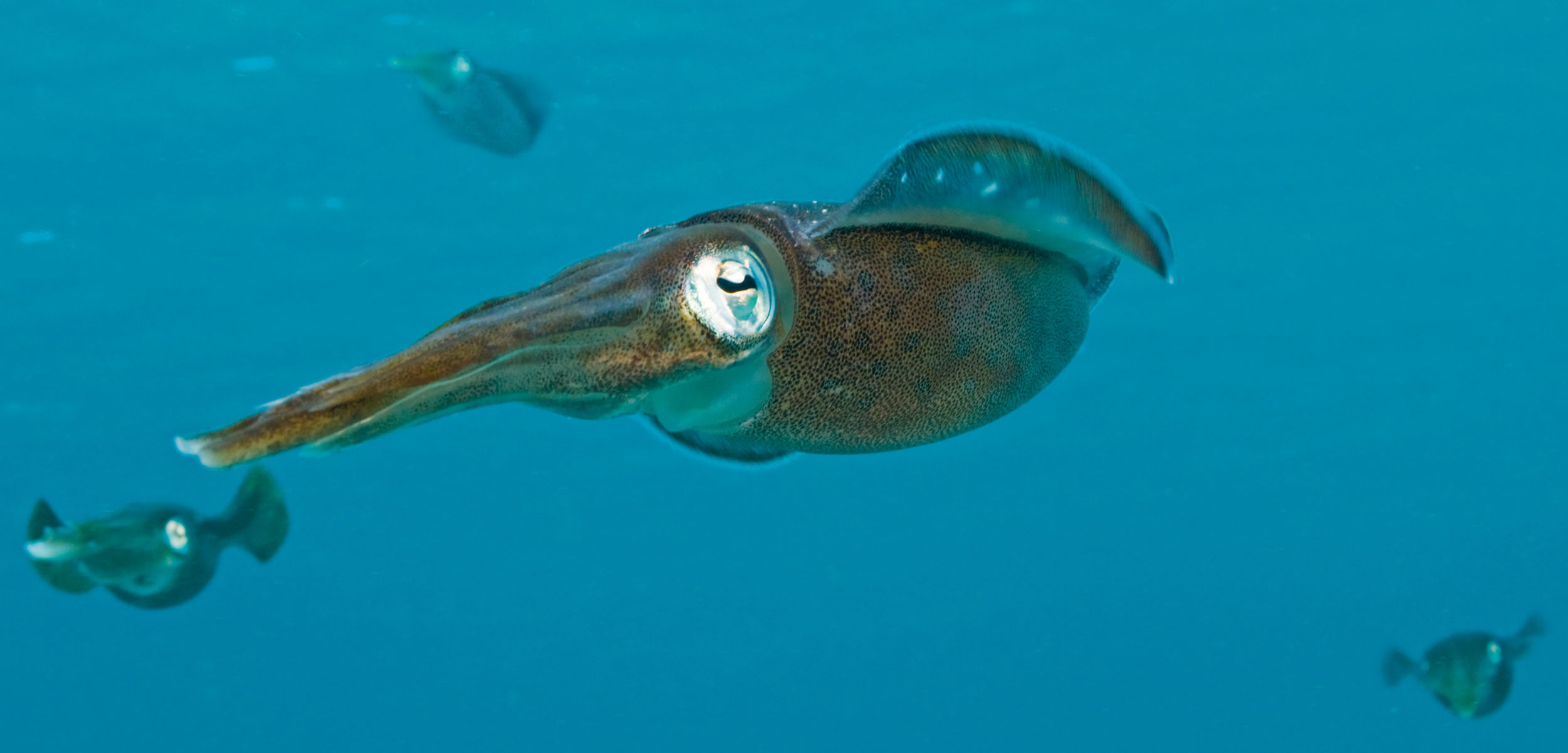Sneaky Arrow Squid Prevent Females from Using Other Males’ Sperm
Researchers discovered that so-called “sneaker” males use plugs of sperm to block females’ reproductive systems.
Article body copy
In a form of imposed contraception, some arrow squid males prevent their female consorts from fertilizing their eggs with another male’s sperm.
Arrow squid aren’t particularly loyal. Females mate with several males and can even store the sperm from such liaisons in special receptacles for future use. New research led by Luiza Saad, a doctoral candidate in zoology at the University of São Paulo in Brazil, however, shows that certain males have evolved a strategy to get ahead of the competition: they lodge a tube-like plug into the female’s reproductive tract, blocking her ability to use stored sperm.
Male arrow squid come in two distinct types: big, brawny, green males that are serial monogamists and smaller, blue-hued “sneaker” males, which are much more underhanded in their approach to mating. While a green male will stick by and defend a female until she is ready to mate—which she signals by turning bright red and sticking out a flashing red oviduct—a sneaker male will swim up to any female at any time, lock tentacles, and deposit a capsule of sperm into a storage area next to her mouth. (This organ, known as the seminal receptacle, is used by the females expressly to deal with the sperm from sneaker males.)
Both the sneaker and the female benefit from this tryst. When the female is ready to deposit her eggs on the seafloor, she gathers them in a capsule and brings them near her mouth. Most often, these eggs will already be fertilized by her main partner, but sometimes she will release stored sperm from her seminal receptacle onto the eggs to give them extra potential for fertilization.
Some sneaker males, however, are unsatisfied with their sperm having competition from other sneakers. In laboratory research, Saad and her colleagues showed that these smaller males will sometimes out-sneak other sneakers by preventing the female from using their sperm. Saad found that the sperm capsules the sneaker males deposit in the female’s seminal receptacle will occasionally block the passage, plugging the organ and preventing the female from releasing any previously deposited sperm.
Noriyosi Sato, a biologist at Shimane University in Japan who was not involved in the study, says that while he is familiar with other species using mating plugs (the technique is widely used by animals as varied as reptiles, spiders, mammals, and even some primates), he never imagined cephalopods would employ such a strategy since males fertilize eggs externally and the seminal receptacle doesn’t connect directly with an organ storing eggs.
Sato has studied female Japanese pygmy squid, which have the ability to reject sperm from unwanted males. He says Saad’s discovery suggests squid mating is more complex than previously thought.
Unfortunately for the female squid, Saad says the obstructive sperm capsules can do lasting damage to their ability to reproduce. In some cases, she found, the plugs were so well attached that the female could never dislodge them—effectively quashing her ability to use her seminal receptacle and putting a permanent damper on any future sneakiness.

